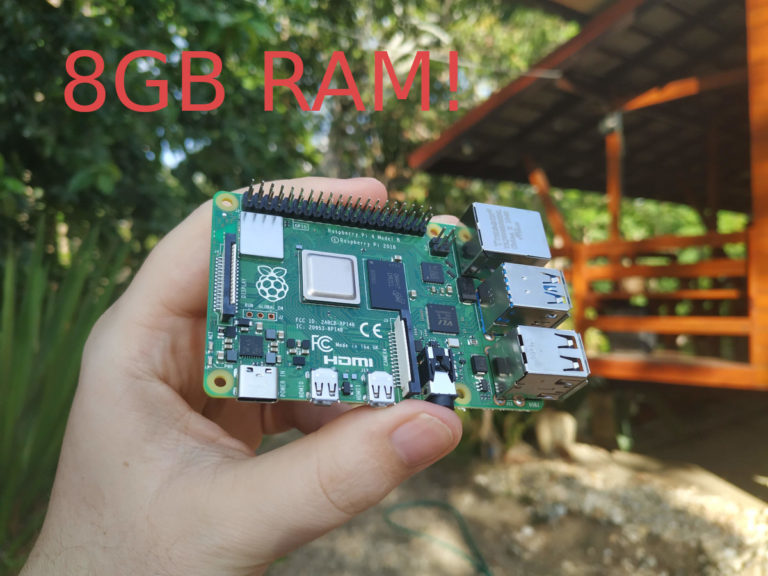Raspberry Pi 4 Gets 8GB RAM, Raspbian 64-bit (Beta)


The Raspberry Pi 4 Model B was launched in June 2019 with Broadcom BCM2711 Arm Cortex-A72 processor coupled with either 1, 2, or 4GB LPDDR4 RAM.
But there were expectations that a Raspberry Pi 4 with 8GB RAM or an 8GB eMMC flash may be eventually launched, as some of the user guides read “Product name: Raspberry Pi 4 Model B 1 GB, 2 GB, 4 GB + 8 GB variants”. We now know the answer as the Raspberry Pi Foundation has just introduced Raspberry Pi 4 with 8GB RAM.
-

- Login or register to post comments
 Printer-friendly version
Printer-friendly version- 10315 reads
 PDF version
PDF version
More in Tux Machines
- Highlights
- Front Page
- Latest Headlines
- Archive
- Recent comments
- All-Time Popular Stories
- Hot Topics
- New Members
digiKam 7.7.0 is released
After three months of active maintenance and another bug triage, the digiKam team is proud to present version 7.7.0 of its open source digital photo manager. See below the list of most important features coming with this release.
|
Dilution and Misuse of the "Linux" Brand
|
Samsung, Red Hat to Work on Linux Drivers for Future Tech
The metaverse is expected to uproot system design as we know it, and Samsung is one of many hardware vendors re-imagining data center infrastructure in preparation for a parallel 3D world.
Samsung is working on new memory technologies that provide faster bandwidth inside hardware for data to travel between CPUs, storage and other computing resources. The company also announced it was partnering with Red Hat to ensure these technologies have Linux compatibility.
|
today's howtos
|









.svg_.png)
 Content (where original) is available under CC-BY-SA, copyrighted by original author/s.
Content (where original) is available under CC-BY-SA, copyrighted by original author/s.

8GB Raspberry Pi 4 released for $75 – Specifications
8GB Raspberry Pi 4 released for $75 – Specifications
New Raspberry Pi 4: 8GB RAM model out now for $75
New Raspberry Pi 4: 8GB RAM model out now for $75 – plus you get a new 64-bit OS
More of Raspberry Pi 4
Raspberry Pi 4 (8GB) Tested: Double the RAM, New 64-Bit OS
8GB Raspberry Pi 4 Launched For $75 USD
You Can Now Buy a Raspberry Pi 4 Computer with 8GB RAM
You Can Now Buy a Raspberry Pi 4 Computer with 8GB RAM
Raspberry Pi 4 gains 8GB RAM version and 64-bit Raspberry Pi OS
Raspberry Pi 4 gains 8GB RAM version and 64-bit Raspberry Pi OS
The Raspberry Pi 4 is Now Available With 8GB RAM
The original
8GB Raspberry Pi 4 on sale now at $75
Raspberry PI 4 news: new 8GB board available
Raspberry PI 4 news: new 8GB board available
Raspberry Pi 4 8GB
Raspberry Pi 4 8GB
Raspberry Pi 4 (8GB) Tested
Raspberry Pi 4 (8GB) Tested: Double the RAM, New 64-Bit OS
8GB Raspberry Pi 4 on sale now at $75
8GB Raspberry Pi 4 on sale now at $75
Raspberry Pi 4 goes 8GB, plus new 64bit OS
Raspberry Pi 4 goes 8GB, plus new 64bit OS
You can now buy a Raspberry Pi 4 with as much RAM as a Mac mini
You can now buy a Raspberry Pi 4 with as much RAM as a Mac mini
New Raspberry Pi OS update: First 8GB Pi 4
New Raspberry Pi OS update: First 8GB Pi 4, now you get these latest features
Raspberry Pi: Here's what's new in latest operating system
Raspberry Pi: Here's what's new in latest operating system update
Raspberry unveils new 8GB Pi 4 and 64-bit OS
Raspberry unveils new 8GB Pi 4 and 64-bit OS
The Raspberry Pi 4 is Available With 8GB RAM
The Raspberry Pi 4 is Available With 8GB RAM